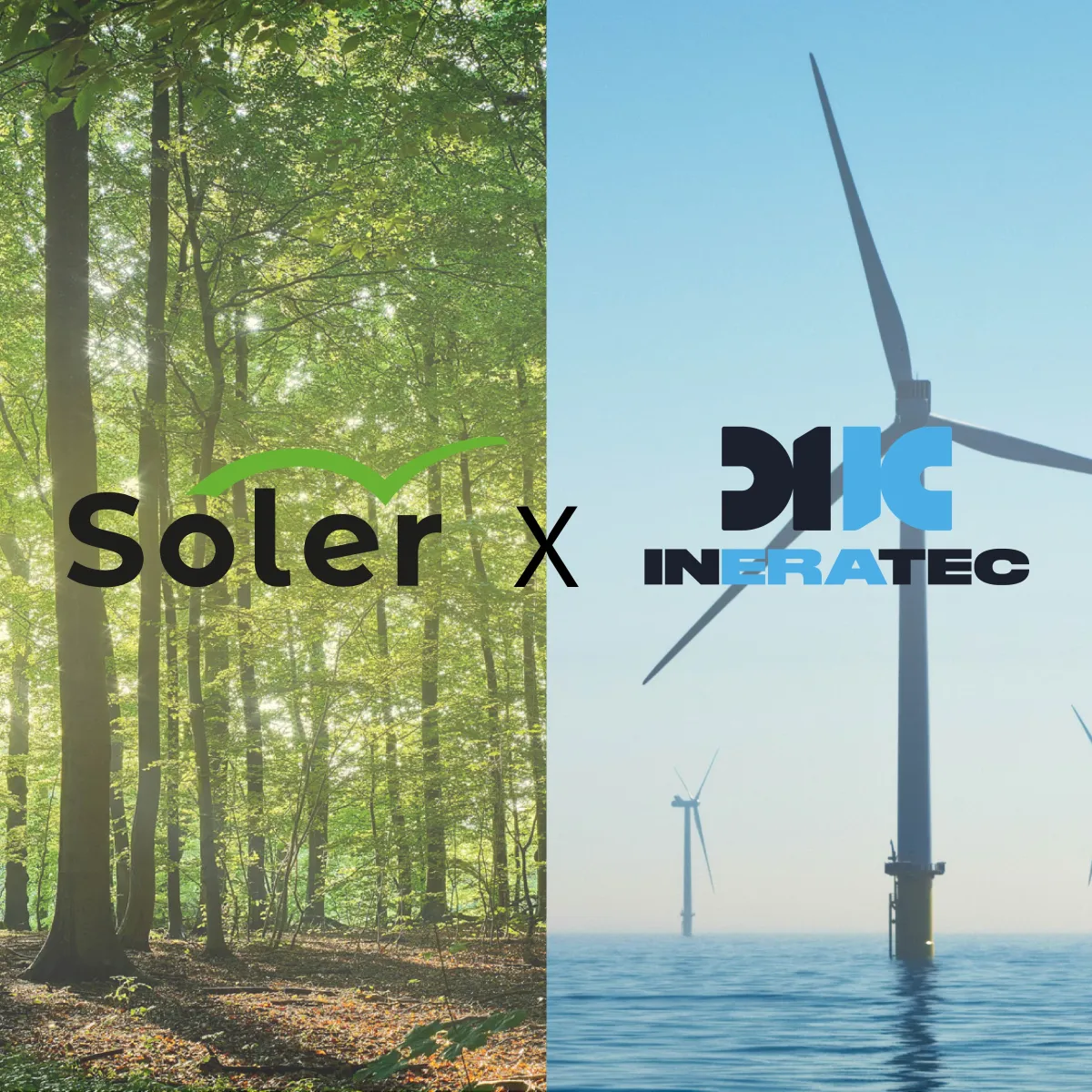
Building e-Fuel Production in Europe by Creating Value from Biocarbon
1 x PDF 2 x Image Download
Karlsruhe/ Germany, Gyé-sur-Seine/ France, 13. June 2024 – In a landmark move toward sustainable fuel solutions, SOLER and INERATEC announce their technology cooperation. The partners are planning to build an innovative biocarbon and e-Fuel production facility in southern France as the blueprint for following projects. This plant will avoid 100,000 tons of CO2 equivalent a year by leveraging the synthesis gas that is generated as a co-product of the biocarbon generated from wood residues using SOLER cutting-edge technology. In the INERATEC's advanced Power-to-Liquid plant the syngas will be used to produce carbon-neutral fuels. These fuels will be delivered to hard-to-abate mobility sectors including aviation, shipping, as well as road transport, marking a significant step in the holistic approach to achieving climate neutrality.
Leveraging synergies to maximize resource efficiency
This project has one major goal: maximize the resource efficiency in forestry by producing biocarbon and sustainable e-Fuels in combination with renewable energy. The partnership between SOLER and INERATEC exemplifies a seamless integration of complementary technologies, optimizing the conversion of forestry residues (and other biomass materials) into high-quality biocarbon and syngas into high-value e-Fuels. Fostering the operational experience from both companies, this project will lead to a robust blueprint for deploying biocarbon and Power-to-Liquid plants from Europe globally.
The process begins with SOLER's cutting-edge pyrolysis technology transforming forestry residues from thinning operations into high-quality biocarbon while also generating clean syngas. In the Power-to-Liquid facility from INERATEC the purified syngas is then used to combine with hydrogen. INERATEC's role is the production of high-grade e-Fuels from the clean syngas of SOLER. By recycling water and process heat, this project stands out in particular, optimally harvesting resources. This synergy leads to a use of 95% of the biomass carbon, achieving maximum resource efficiency.
Value Chain created by SOLER and INERATEC, starting at forest residues and renewable energy as feedstock. © INERATEC/SOLER
A holistic approach for environmental impact
The collaboration introduces an environmentally superior approach to alternative fuel production, marked by its emphasis on efficiency and sustainability. The process is designed to ensure that all carbon from the biomass feedstock is transformed, thereby maximizing the use of natural resources while aligning with the growth cycles of forests. The focus on valorizing low value sustainably managed residues supports the improved management of forests to enhance their health and resilience towards climate change and fires. The production of biocarbon and e-Fuels as renewable substitutes to otherwise fossil coal and fuel use in industry and transport maximizes the climate benefit of using wood residues. Pierre Soler-My, CEO of SOLER, emphasizes the significance of this approach:
"The process uses sustainably sourced low-value wood from managed forests close to the production site. SOLER cutting-edge technology makes it possible to produce strategic products on an industrial scale for sectors of activity that are hard to decarbonise. By combining it with INERATEC's advanced process for producing e-fuels, we are optimising even more the creation of high-performance, sustainable solutions for tomorrow's industry. In this way, the partnership between INERATEC and SOLER is reconciling the challenge of managing the carbon footprint of mobility and transport, while protecting and developing forest resources.“
Leading the way with sustainable solutions for global mobility
This strategic collaboration positions SOLER and INERATEC at the forefront of transforming mobility sectors traditionally reliant on fossil fuels and metallurgical industries depending on metallurgical coal. By introducing renewable, carbon-neutral e-Fuels and biocarbon, the partnership aims to significantly reduce greenhouse gas emissions in sectors that are challenging to decarbonize.
Tim Boeltken, CEO of INERATEC, comments,
"Integrating SOLER's biogenic CO2 with our technology creates a powerful solution for accelerating the transition to climate neutrality in aviation, shipping, and road transport. These are critical areas where innovation in fuel production can have a substantial impact on achieving global climate goals. By tapping into this new source for biogenic carbon dioxide, we maximize the number of global production sites for INERATEC."
A blueprint for the global e-Fuel scale-up
This partnership creates compelling project opportunities for the implementation of pioneering and scalable clean solutions. The use of modular technologies by both SOLER and INERATEC allows for the flexible application and expansion, particularly beneficial in areas where improved forest management and residue use can support the sustainability and resilience of forest economies. Such scalability enhances the attractiveness of the investment, promising significant returns while supporting the transition towards sustainable energy solutions. Moreover, the project leverages fully renewable resources, thereby offering an investment that not only yields financial returns but also contributes to a sustainable future.
About
SOLER
Founded in 1993 in the Grand Est region of France, the SOLER Group is a leader in the production of renewable carbon, offering a unique, cutting-edge technological solution for achieving global climate neutrality. Thanks to its own patented technology, the Group's biorefineries transform wood residues - from sustainably managed forests located near its production sites - into charcoal, biocarbon, biochar and green energy. The SOLER Group is based in Gyé-sur-Seine (Aube, Grand Est) and Lacanau (Gironde, Nouvelle-Aquitaine) and employs almost 200 people. Find out more about the SOLER Group in its press kit here.
INERATEC
INERATEC is a pioneer in the field of Power-to-Liquid applications. The company supplies sustainable e-fuels as well as chemical products. Modular chemical plants for power-to-X and gas-to-liquid applications use hydrogen from renewable electricity and greenhouse gases such as CO2 to produce e-kerosene, CO2-neutral gasoline, clean diesel or synthetic waxes, methanol or SNG. Founded in 2016, INERATEC has already implemented industrial-scale power-to-liquid plants at German sites to boost the availability of sustainable fuels and chemicals in various transport sectors such as aviation. Further information can be found via www.ineratec.com
Media contacts
INERATEC GmbH
Isabel Fisch
+ 49 1621852663
isabel.fisch@ineratec.de
SOLER
Anne-Mette SOLER-MY
+33 (0)6 64 02 31 05
annemette-solermy@soler-group.com
Kontakte
INERATEC GmbH
Isabel Fisch
Communication & PR Manager
T: + 49 1621852663
E: isabel.fisch@ineratec.de